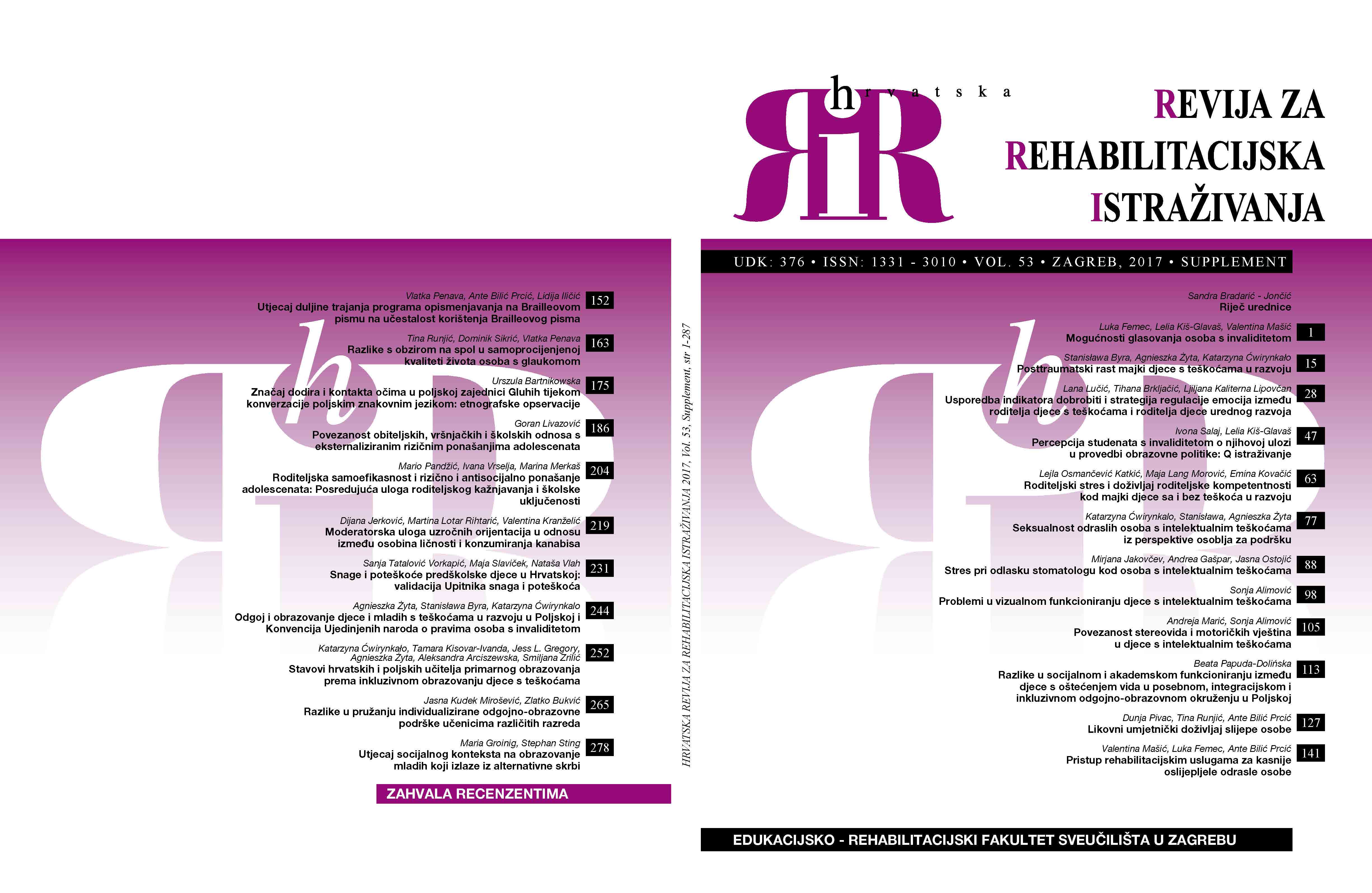Povezanost stereovida i motoričkih vještina u djece s intelektualnim teškoćama
Relationship between stereoacuity and motor skills of children with intellectual disabilities
Author(s): Andreja Ž. Marić, Sonja AlimovićSubject(s): Social Sciences, Education, Psychology
Published by: Sveučilište u Zagrebu, Edukacijsko-rehabilitacijski fakultet
Keywords: stereoacuity; children with intellectual disabilities; fine motor skills; gross motor skillsM
Summary/Abstract: The goal of this study was to determine the relationship between stereoacuity and proficiency in fine and gross motor skills. Stereovision is one of the information sources for accurate perception of objects in depth, and it is related to performance on motor skills tasks. Studies have shown that children of primary school age with mild intellectual disabilities perform worse than typically developing children on specific fine and gross motor skills. Also, problems in visual functioning, including impaired binocular vision (stereovision), are common in children with intellectual disability. We tested 27 children with intellectual disabilities but without any motor skills deficiency. Research was conducted at the Centre for Education "Velika Gorica" and Elementary School "Nad lipom". For this research, we constructed a Likert-type scale to assess fine and gross motor proficiency. We also tested stereoacuity using the Random Dot 2 Acuity Test with Lea Symbols®. Our results show a relationship between the degree of stereovision and level of proficiency in fine and gross motor skills. Since stereovision develops during preschool years and is related to other skills, we need to provide timely assessment of visual functioning and create specific program adaptations for children with intellectual disabilities.
Journal: Hrvatska revija za rehabilitacijska istraživanja
- Issue Year: 53/2017
- Issue No: Supp.
- Page Range: 105-112
- Page Count: 8
- Language: English

